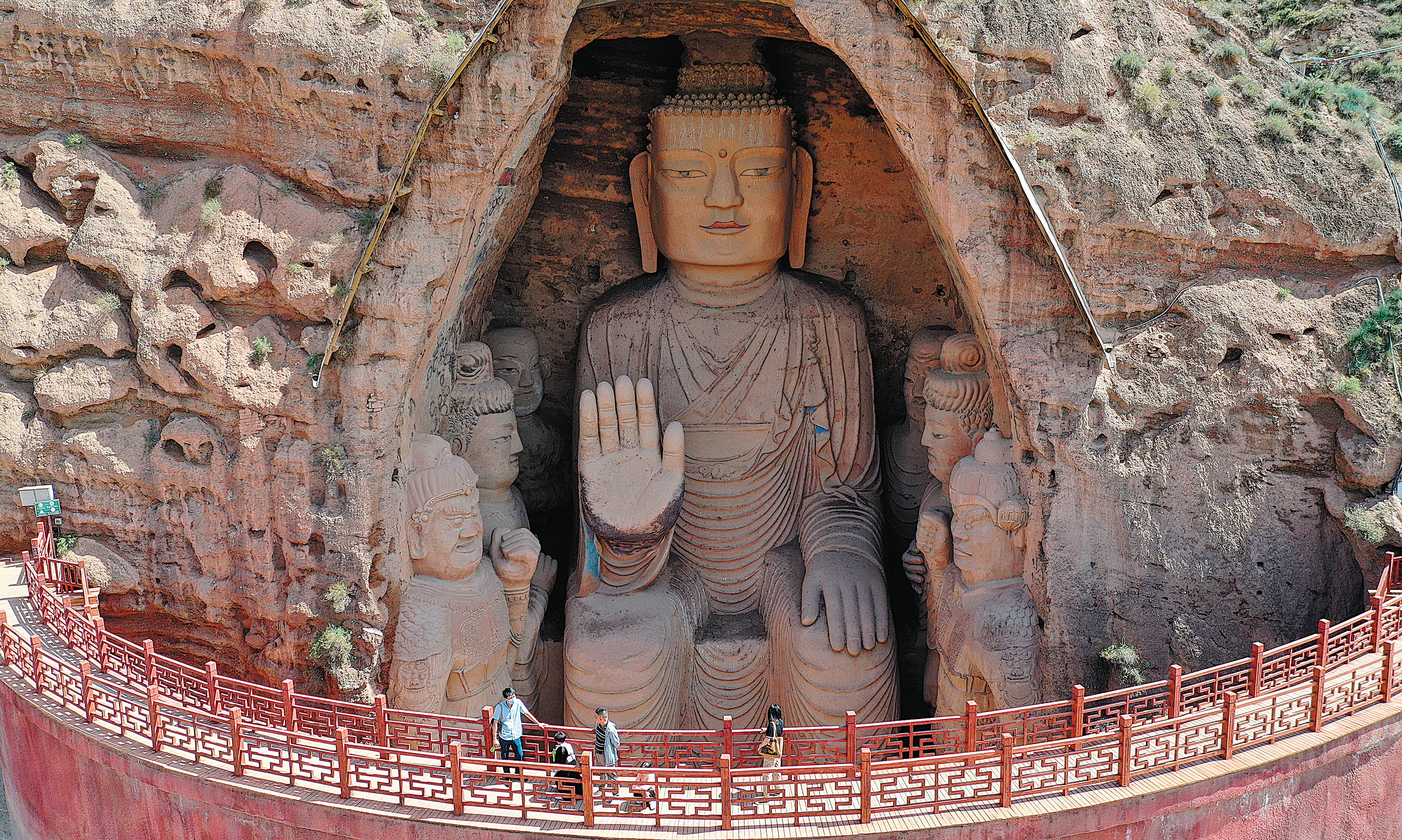Giant statue finds its feet
THE ARTICLES ON THESE PAGES ARE PRODUCED BY CHINA DAILY, WHICH TAKES SOLE RESPONSIBILITY FOR THE CONTENTS

A 92ft-high Buddha statue stands on a cliff in Wuwei, Gansu province, along with its heavenly guards. Despite the solemn atmosphere, the Buddha’s face wears an enigmatic smile, from which many pilgrims derive a sense of inner peace.
As the biggest statue in Tiantishan Grottoes, the Buddha, in No 13 Cave of this Buddhist grotto complex, has been there for more than 1,300 years.
In ancient times it was probably hard to reach this sacred place due to the rugged landscape. The name, Tiantishan, means a mountain with a ladder to heaven, but today’s visitors have an easier way to reach the spot.
A dam was erected just in front of the Buddha statue in 1960. People can enjoy the view of the reservoir and the cultural heritage from the top of the dam. The landscape shows how modern people live with history.
Nevertheless, continuous seeping water from the grotto rocks has been a threat to the Buddha statue for a long time.
The feet and bottom of the garments on the Buddha and its heavenly guards have eroded. The appearance of the Bixi (a turtle-shaped sacrificial animal) statues, upon which the guards stand, has also been affected. Some rocks began to collapse. Mice often made their shelter in the cracks of the statues.
“Water and salt kept oozing out of the rock,” said Liu Zhi, director of the Tiantishan Grottoes Protection and Research Institute. “The ancient statue was diseased and urgently needed to be cured.”
A project to restore the statues was launched in May last year and was completed in August. The programme was led by the Dunhuang Academy, an institution based in Dunhuang, Gansu, best known for its expertise in protecting the Mogao Caves, a complex of Buddhist grottoes and a UNESCO World Heritage Site thought to have been built between the fourth and the 14th centuries.
Unstable rocks were cleared in Tiantishan’s No 13 Cave. Frames made of waterproof material, such as fibre-reinforced plastics, were set inside the foundation of the statues. Pebbles were used to fill the frames and keep the ground water from rising. A drainage system was also designed to usher the water in the statue’s foundations into a well.
“It’s impossible to totally keep water off the statue,” said Qiao Hai, the restoration programme leader. “The key is to drain it smoothly.”
Traditional material such as mixed earth and foliage dominated the restoration. It was how the Buddha statue was built in the beginning. After the No 13 Cave of Tiantishan Grottoes was built during the Tang Dynasty (618-907CE), it was renovated several times throughout the following millennia. Completion of this most recent restoration does not mean the work is done once and for all.
“I cannot promise how many years the Buddha will be secure due to our restoration,” Qiao said. “But a scientific and dynamic monitoring system will closely follow how the statues’ natural environment changes.
“Once we detect a problem, we’ll fix it via restoration on a smaller scale. It’s a long-term project, and prevention will play a key role.”
Eighteen caves remain in Tiantishan today. In 2001, the grottoes were inscribed onto the list of national-level cultural heritage units under key protection.
Though the site’s popularity among tourists cannot compete with the Mogao Caves, the significance of Tiantishan has always been highlighted by scholars. The oldest grottoes in Tiantishan were carved in the fifth century, with the patronage of a regional king, and its construction lasted until the Qing Dynasty (1644-1911).
“Consequently, it has a key status in the history of Chinese grotto temples and remains an important witness of how Buddhism spread in China,” said Liu, the Tiantishan institute’s director.
Previously published on Chinadaily.com.cn
Subscribe to Independent Premium to bookmark this article
Want to bookmark your favourite articles and stories to read or reference later? Start your Independent Premium subscription today.